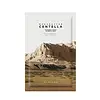What's inside
What's inside
 Key Ingredients
Key Ingredients

 Benefits
Benefits

 Ingredients Side-by-side
Ingredients Side-by-side

Water
Skin ConditioningCentella Asiatica Extract
CleansingGlycerin
HumectantCentella Asiatica Flower/Leaf/Stem Extract
Skin ConditioningGanoderma Lucidum Stem Extract
Skin ConditioningAlbatrellus Confluens Extract
HumectantCentella Asiatica Root Extract
Skin ConditioningCentella Asiatica Leaf Extract
Skin ConditioningSodium Hyaluronate
HumectantBetaine
HumectantTrehalose
HumectantAmmonium Acryloyldimethyltaurate/Vp Copolymer
Panthenol
Skin ConditioningPolyglyceryl-10 Laurate
Skin ConditioningAcrylates/C10-30 Alkyl Acrylate Crosspolymer
Emulsion StabilisingMethyl Diisopropyl Propionamide
MaskingTromethamine
BufferingGlyceryl Glucoside
HumectantDisodium EDTA
Allantoin
Skin ConditioningGlyceryl Acrylate/Acrylic Acid Copolymer
HumectantSaccharomyces Ferment Filtrate
HumectantButylene Glycol
HumectantSaccharomyces Ferment
Skin ConditioningAsiaticoside
AntioxidantMadecassoside
AntioxidantMadecassic Acid
Skin ConditioningAcetyl Hexapeptide-8
HumectantAspartic Acid
MaskingAsiatic Acid
Skin Conditioning1,2-Hexanediol
Skin ConditioningHydroxyacetophenone
AntioxidantPentylene Glycol
Skin ConditioningWater, Centella Asiatica Extract, Glycerin, Centella Asiatica Flower/Leaf/Stem Extract, Ganoderma Lucidum Stem Extract, Albatrellus Confluens Extract, Centella Asiatica Root Extract, Centella Asiatica Leaf Extract, Sodium Hyaluronate, Betaine, Trehalose, Ammonium Acryloyldimethyltaurate/Vp Copolymer, Panthenol, Polyglyceryl-10 Laurate, Acrylates/C10-30 Alkyl Acrylate Crosspolymer, Methyl Diisopropyl Propionamide, Tromethamine, Glyceryl Glucoside, Disodium EDTA, Allantoin, Glyceryl Acrylate/Acrylic Acid Copolymer, Saccharomyces Ferment Filtrate, Butylene Glycol, Saccharomyces Ferment, Asiaticoside, Madecassoside, Madecassic Acid, Acetyl Hexapeptide-8, Aspartic Acid, Asiatic Acid, 1,2-Hexanediol, Hydroxyacetophenone, Pentylene Glycol
Centella Asiatica Extract
CleansingWater
Skin ConditioningDipropylene Glycol
HumectantGlycereth-26
HumectantGlycerin
Humectant1,2-Hexanediol
Skin ConditioningBetaine
HumectantButylene Glycol
HumectantPaeonia Suffruticosa Root Extract
Skin ProtectingPolyglyceryl-10 Laurate
Skin ConditioningChamomilla Recutita Flower Extract
MaskingGlyceryl Caprylate
EmollientCarbomer
Emulsion StabilisingXanthan Gum
EmulsifyingArginine
MaskingEthylhexylglycerin
Skin ConditioningSodium Hyaluronate
HumectantDextrin
AbsorbentTheobroma Cacao Extract
Skin ConditioningPropanediol
SolventCoptis Japonica Root Extract
Skin ConditioningMentha Arvensis Leaf Oil
MaskingSodium Hyaluronate Crosspolymer
HumectantHydrolyzed Glycosaminoglycans
HumectantBenzyl Glycol
SolventCentella Asiatica Extract, Water, Dipropylene Glycol, Glycereth-26, Glycerin, 1,2-Hexanediol, Betaine, Butylene Glycol, Paeonia Suffruticosa Root Extract, Polyglyceryl-10 Laurate, Chamomilla Recutita Flower Extract, Glyceryl Caprylate, Carbomer, Xanthan Gum, Arginine, Ethylhexylglycerin, Sodium Hyaluronate, Dextrin, Theobroma Cacao Extract, Propanediol, Coptis Japonica Root Extract, Mentha Arvensis Leaf Oil, Sodium Hyaluronate Crosspolymer, Hydrolyzed Glycosaminoglycans, Benzyl Glycol
 Reviews
Reviews

Ingredients Explained
These ingredients are found in both products.
Ingredients higher up in an ingredient list are typically present in a larger amount.
1,2-Hexanediol is a synthetic liquid and another multi-functional powerhouse.
It is a:
- Humectant, drawing moisture into the skin
- Emollient, helping to soften skin
- Solvent, dispersing and stabilizing formulas
- Preservative booster, enhancing the antimicrobial activity of other preservatives
Betaine is a common humectant (a substance that promotes retention of moisture). It's known to be gentle on the skin and can help balance hydration.
This ingredient is best for improving hydration and soothing irritated skin. Studies also show it helps even out skin tone.
Fun fact: Betaine is naturally created in the skin and body. The kind found within cosmetic products can be either plant-derived or synthetic.
Another name for betaine is trimethylglycine.
Learn more about BetaineButylene Glycol (or BG) is used within cosmetic products for a few different reasons:
Overall, Butylene Glycol is a safe and well-rounded ingredient that works well with other ingredients.
Though this ingredient works well with most skin types, some people with sensitive skin may experience a reaction such as allergic rashes, closed comedones, or itchiness.
Learn more about Butylene GlycolCentella Asiatica Extract (Centella) is derived from an herb native to Southeast Asia. It is famous for its anti-inflammatory and soothing properties.
Centella is rich in antioxidants and amino acids, such as Madecassic Acid and Asiaticoside.
Studies show the compounds in centella help with:
The combination of all these properties makes centella effective at soothing, hydrating, and protecting the skin.
Other great components of centella include Vitamin A, vitamin C, several B vitamins, and Asiatic Acid.
Fun fact: Centella has been used as a medicine and in food for many centuries. As a medicine, it is used to treat burns, scratches, and wounds.
Learn more about Centella Asiatica ExtractGlycerin is already naturally found in your skin. It helps moisturize and protect your skin.
A study from 2016 found glycerin to be more effective as a humectant than AHAs and hyaluronic acid.
As a humectant, it helps the skin stay hydrated by pulling moisture to your skin. The low molecular weight of glycerin allows it to pull moisture into the deeper layers of your skin.
Hydrated skin improves your skin barrier; Your skin barrier helps protect against irritants and bacteria.
Glycerin has also been found to have antimicrobial and antiviral properties. Due to these properties, glycerin is often used in wound and burn treatments.
In cosmetics, glycerin is usually derived from plants such as soybean or palm. However, it can also be sourced from animals, such as tallow or animal fat.
This ingredient is organic, colorless, odorless, and non-toxic.
Glycerin is the name for this ingredient in American English. British English uses Glycerol/Glycerine.
Learn more about GlycerinPolyglyceryl-10 Laurate is an ester of lauric acid and Polyglycerin-10.
Polyglyceryl-10 Laurate is a cleansing agent and emulsifier. It helps gather dirt, oil, and other pollutants to be rinsed away. As an emulsifier, it helps prevent ingredients from separating, such as oil and water.
Polyglyceryl-10 Laurate may not be fungal acne safe.
Learn more about Polyglyceryl-10 LaurateSodium Hyaluronate is hyaluronic acid's salt form. It is commonly derived from the sodium salt of hyaluronic acid.
Like hyaluronic acid, it is great at holding water and acts as a humectant. This makes it a great skin hydrating ingredient.
Sodium Hyaluronate is naturally occurring in our bodies and is mostly found in eye fluid and joints.
These are some other common types of Hyaluronic Acid:
Learn more about Sodium HyaluronateWater. It's the most common cosmetic ingredient of all. You'll usually see it at the top of ingredient lists, meaning that it makes up the largest part of the product.
So why is it so popular? Water most often acts as a solvent - this means that it helps dissolve other ingredients into the formulation.
You'll also recognize water as that liquid we all need to stay alive. If you see this, drink a glass of water. Stay hydrated!
Learn more about Water